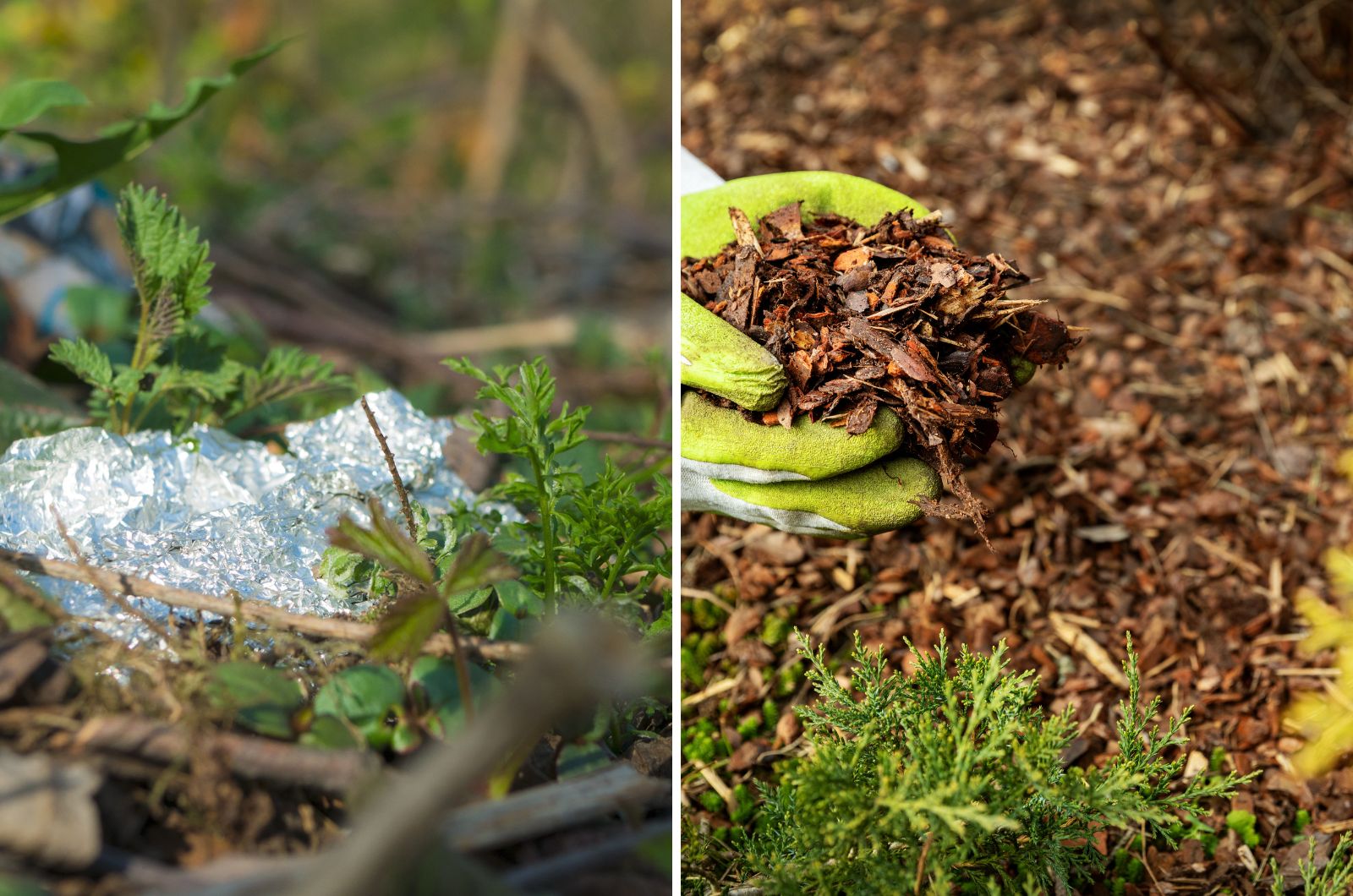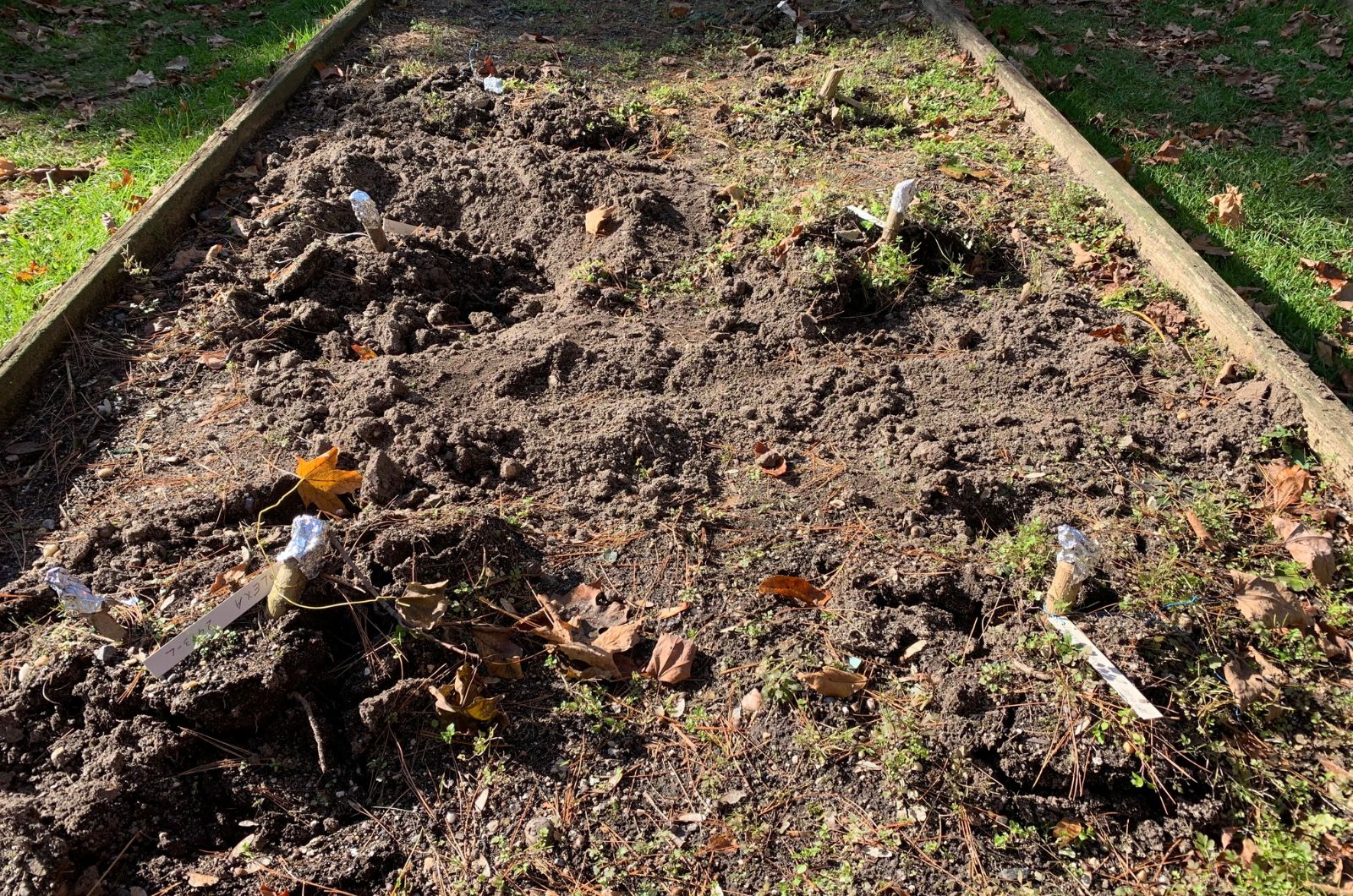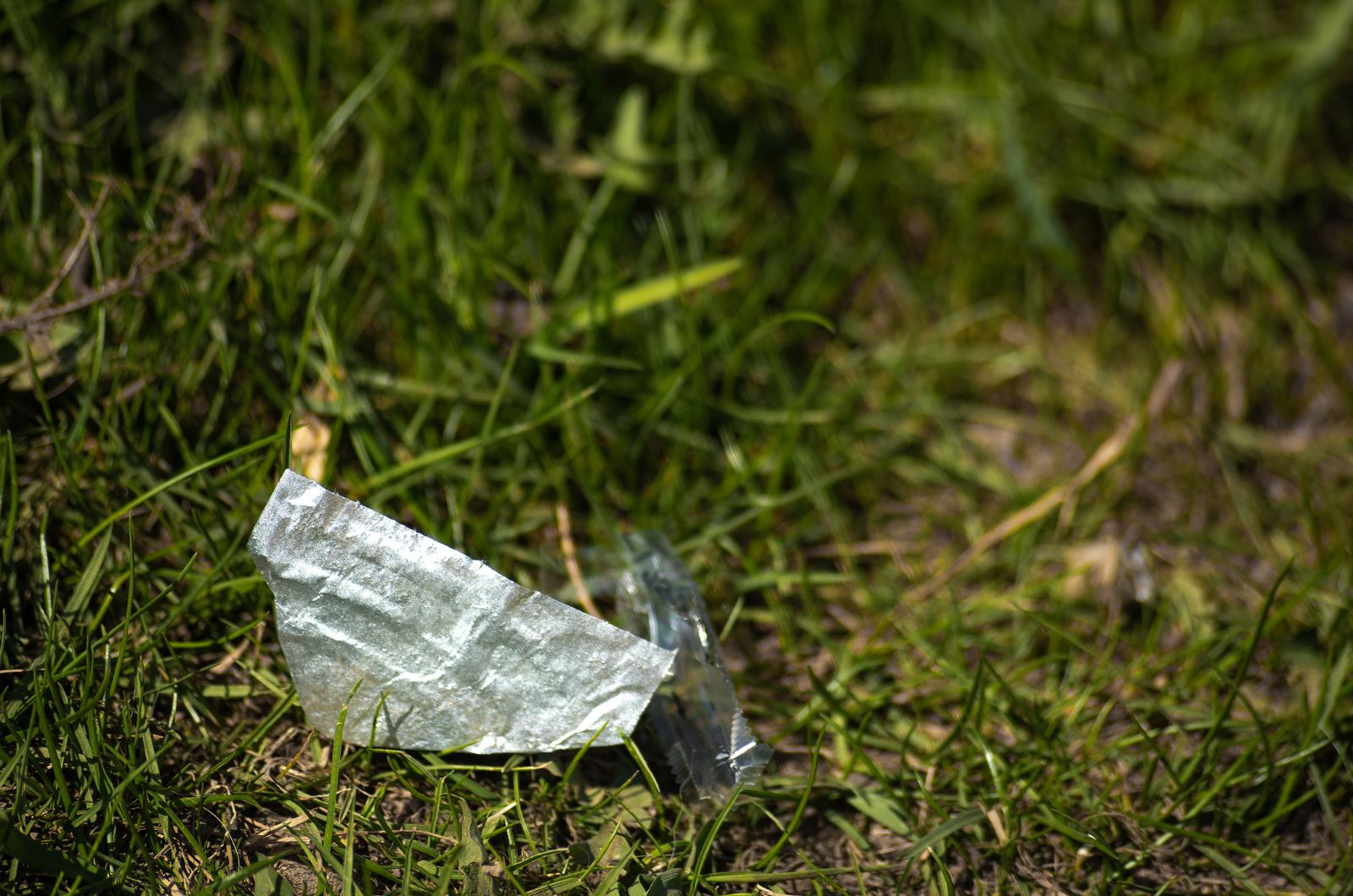Gardening is beneficial in many ways but it’s also a super exciting activity, especially with all the innovative and interesting methods you can incorporate into it.
Aluminum foil is mainly used in the kitchen and I’m sure many growers will be surprised when they hear that there’s another purpose for this material related to gardening, specifically for mulch.
I’ll show you some of the uses of aluminum foil for mulch, how to add it, and some drawbacks.
Let’s get started!
1. It Prevents Weed Development
Weeds, aka a gardener’s nightmare, are the most common issue and probably the most challenging to solve.
DIY weed killers are a good choice but why not prevent the issue in the first place?
Aluminum foil can help you with that. It will act as a physical barrier between soil and light source and weed seeds can’t survive without light.
2. Acts As A Pest Repellent
Another common problem almost every gardener faces is pest infestation.
Snails and aphids can wreak havoc on your prized plants but they won’t come near if you use aluminum foil. Its shiny surface simply isn’t attractive to these nuisances.
The good news is that butterflies, moths, and other beneficial insects won’t be repelled by foil; moreover, they’ll appreciate more light to dry their wet wings!
3. Fixes Light Exposure
Another benefit of the reflective nature of this foil is its ability to increase light levels for the lower plant sections. This is especially important for plants in shadier locations.
It will prevent legginess in seedlings and they’ll develop into healthy and robust plants.
Remember that light plays a major role in the plant growing process and we must find a way to ensure enough of it for all our plants.
4. Regulates Soil Temperature
Soil temperatures in the summer make it hard for plants to develop healthily because they lose water fast. As you may know, aluminum foil reflects heat and it will decrease soil temperatures during warmer months.
Additionally, it will help the soil retain much-needed moisture especially if used in organic mulches.
It will act as a barrier and prevent water evaporating from the soil.
Apart from cooling the soil, aluminum foil can also do the opposite. If positioned correctly, it can reflect heat toward the ground and in that way increase soil temperatures during colder months.
How To Add It To Mulch
The first thing you need to do if you decide on this method is water the soil well.
Now take the foil and tear off a couple of sheets. The number of sheets you need depends on the size of your planting beds.
Take each sheet and tear approximately 1-inch long strips from each. Put the strips around your plants, making sure the shiny surface faces up.
Be careful not to damage the root system of your plants when you’re adding the foil.
The next step is to put a layer of organic mulch over the foil. Wood chips and straw make an excellent choice but make sure you mix it well with foil strips. It will keep it in place and make your garden display look even better.
Drawbacks Of Aluminum Foil For Mulch
Aluminum foil isn’t something you’ll find in every garden. Now that you have read the benefits I described above, I’m sure you’re wondering why every grower doesn’t use it.
Well, one of the drawbacks of this material is that it does not break down, unlike other natural mulches. This means that organic matter and nutrients in the soil won’t increase.
The wind is another problem because it can blow your foil away. Finally, if you don’t apply it as recommended, you risk damaging some plants by disrupting light levels.
It’s true that gardeners will try anything for their plants to grow happy and healthy. As long as the method or ingredient won’t harm your green buddies, give it a chance. And who knows, you might use aluminum foil more often in your garden than you do in your kitchen!




